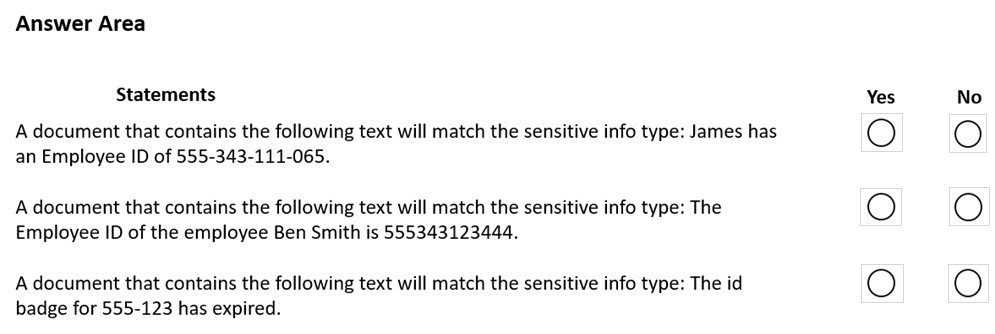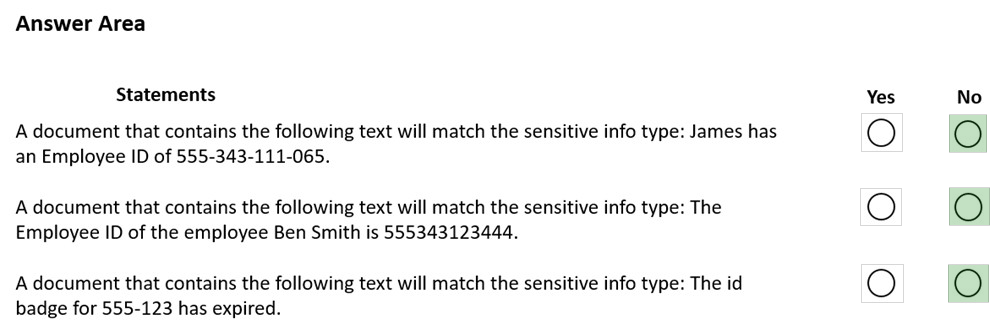

HOTSPOT -
You have a Microsoft 365 tenant that uses data loss prevention (DLP) to protect sensitive information.
You create a new custom sensitive info type that has the matching element shown in the following exhibit.
The supporting elements are configured as shown in the following exhibit.
The confidence level and character proximity are configured as shown in the following exhibit.
For each of the following statements, select Yes if statement is true. Otherwise, select No
NOTE: Each correct selection is worth one point.
Hot Area:

zaspamer
Highly Voted 3 years, 7 months agoPsiCzar
Most Recent 1 year agoSam12
3 years, 7 months agodmonton
3 years, 4 months agonupagazi
3 years, 7 months agoxlws
3 years, 8 months agosergioandreslq
3 years, 7 months agoBoeroe
11 months agoklosedotorg83
3 years, 9 months agoBongconnection
3 years, 9 months agoSam12
3 years, 7 months agodmonton
3 years, 4 months ago